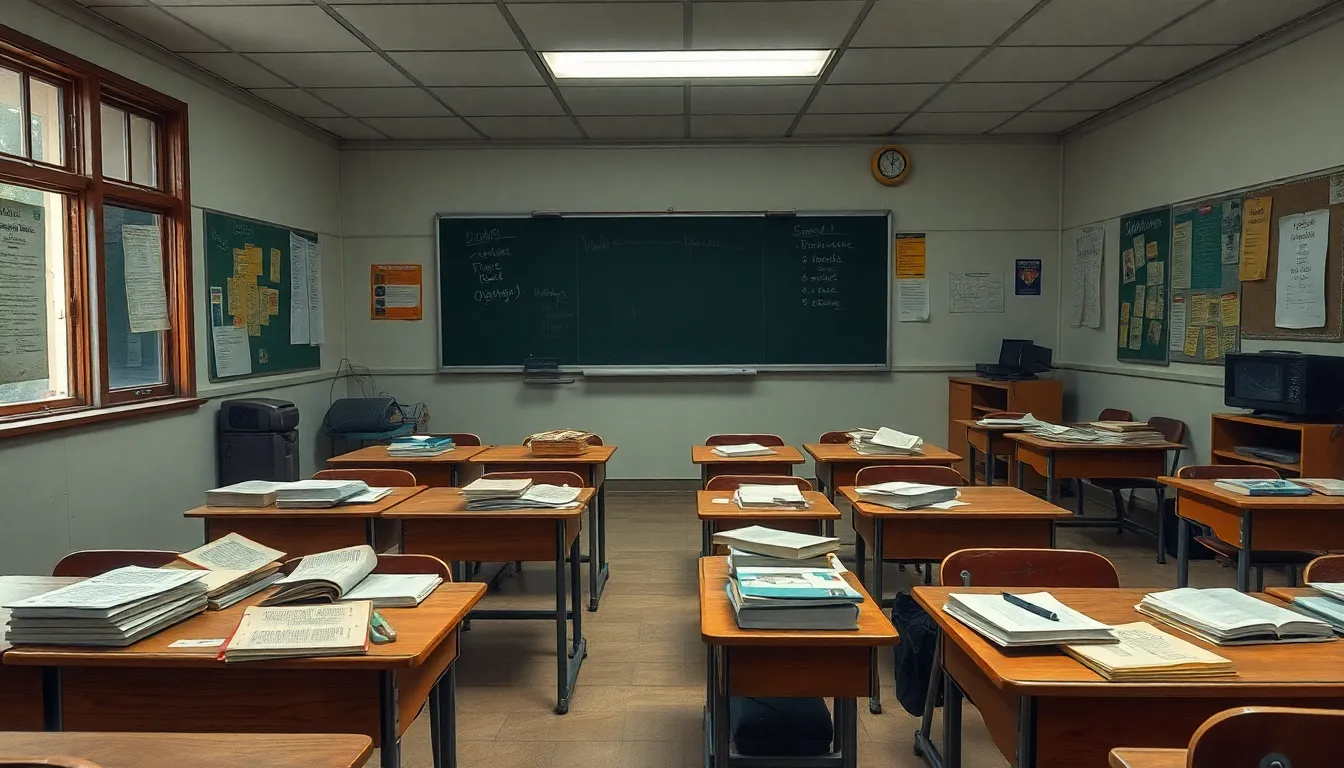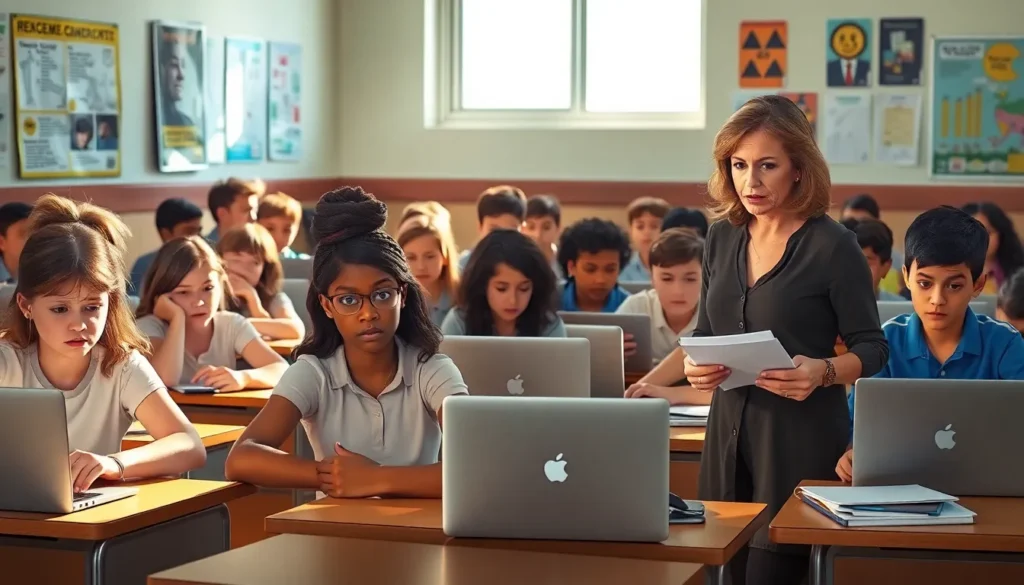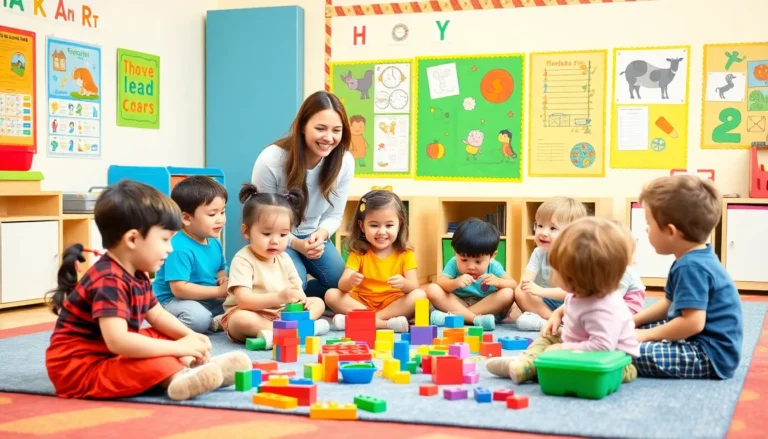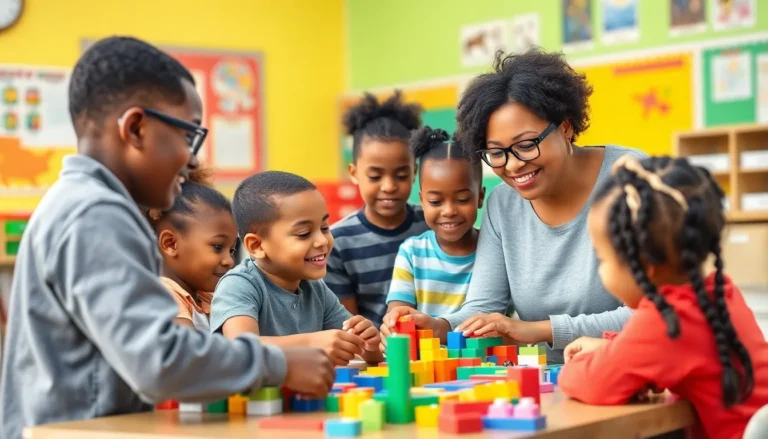Table of Contents
ToggleEducation today faces a multitude of challenges that could make even the most optimistic teacher sigh. From outdated curricula that feel like they belong in a museum to technology that sometimes seems more like a distraction than a tool, the classroom experience can be a rollercoaster ride of confusion. It’s a wonder students don’t need a map just to navigate their own learning!
But it’s not just the students who are feeling the pinch. Teachers juggle large class sizes and dwindling resources while trying to keep their passion for education alive. With all these hurdles, one has to wonder: is education becoming a game of dodgeball instead of a path to knowledge? Dive in as we explore the quirks and quandaries shaping the modern educational landscape.
Overview of Problems in Education Today
Educational challenges manifest in various forms, affecting students, teachers, and educational institutions. Outdated curricula often lack relevance, failing to meet the evolving needs of students. Technology, while a valuable tool, frequently distracts learners, hindering their focus on essential subjects.
Teachers experience significant difficulties in managing large class sizes, impacting their ability to provide personalized attention. Limited resources further exacerbate the situation, making it harder for educators to engage students effectively. Many teachers report feeling overwhelmed, which threatens their enthusiasm and satisfaction in their roles.
Equity in education presents another critical issue. Disparities in funding between school districts contribute to unequal access to quality education. Students in under-resourced areas often encounter inadequate facilities, outdated materials, and fewer extracurricular opportunities. These inequities perpetuate cycles of disadvantage, affecting long-term educational outcomes.
Mental health is also a pressing concern among students. Anxiety and stress levels have increased, resulting in challenges related to classroom participation and overall performance. Support systems within schools often fall short, leaving many students to navigate these issues without help.
Lastly, the emphasis on standardized testing creates pressure that compromises educational depth. Teaching to the test limits exploration and creativity, narrowing the curriculum to focus only on tested subjects. These various factors collectively contribute to a complex educational landscape that requires urgent attention and reform.
Lack of Funding

Lack of funding presents a significant barrier to effective education today. Schools across the country face shortfalls, limiting their ability to provide adequate learning environments and resources for students.
Impact on Resources
Reduced funding directly impacts classroom resources, including textbooks, technology, and supplies. Schools often rely on community donations or fundraising efforts to fill these gaps. Without sufficient financial support, many students experience outdated materials that fail to engage or meet modern educational standards. Consequently, this disparity leads to unequal educational experiences, particularly in low-income areas, where basic supplies are often scarce.
Effect on Teacher Salaries
Funding shortages also affect teacher salaries, creating challenges in attracting and retaining quality educators. Many teachers find themselves receiving lower compensation than their counterparts in higher-funded districts. This situation contributes to high turnover rates, disrupting student learning and continuity. Budget constraints often force school districts to make difficult choices, prioritizing operational costs over fair compensation for teachers, ultimately compromising educational outcomes.
Inequality in Education
Inequality in education remains a pressing issue, greatly affecting students’ learning experiences. Disparities in resources and opportunities create significant barriers for many.
Socioeconomic Disparities
Socioeconomic factors play a critical role in educational inequality. Students from low-income families often attend underfunded schools, leading to inadequate materials and outdated technology. Access to extracurricular activities and tutoring programs is limited for these students, which further hampers academic growth. The U.S. Census Bureau reported that children in poverty are less likely to graduate high school. Unequal funding structures exacerbate these challenges, leaving many students without essential support.
Racial and Ethnic Gaps
Racial and ethnic disparities also contribute to educational inequality. Minority students frequently attend schools with fewer resources, resulting in lower academic performance. Systemic issues, such as segregation and biased discipline practices, deepen these gaps. According to the National Center for Education Statistics, Black and Hispanic students are significantly underrepresented in advanced placement courses. Efforts to address these disparities must focus on equitable funding, increased teacher training, and culturally relevant curricula to support all students.
Outdated Curriculum
Outdated curricula hinder student engagement and learning effectiveness. Many educational programs fail to address the skills necessary for success in today’s fast-paced world.
Relevance to Modern Society
Modern society demands critical thinking and problem-solving abilities. Curricula often emphasize rote memorization over these essential skills. Students encounter challenges when faced with real-world problems, as coursework may not prepare them adequately. Relevant topics such as climate change, digital literacy, and global citizenship often receive insufficient attention. The absence of updated material fosters disinterest among students, leading to disengagement. Educators struggle to motivate students because they do not see the connection between what they learn and their future. This disconnect ultimately compromises students’ ability to thrive in today’s society.
Integration of Technology
Technology integration into education remains inconsistent and sporadic. Outdated curricula fail to incorporate new technological advancements essential for contemporary learning. Many schools lack the infrastructure to support modern educational tools such as interactive software and online resources. Technology can enhance learning experiences by providing access to diverse information and interactive applications. Educational institutions must prioritize the adoption of technology that aligns with current curricula. Students benefit from using current technology, as it prepares them for experiences beyond the classroom. Integrating technology into courses enhances engagement and equips students with necessary skills for the 21st-century workforce.
Mental Health Issues
Mental health issues significantly impact students and hinder their academic performance. Rising stress and anxiety levels among students continue to affect classroom participation and learning outcomes.
Stress and Anxiety among Students
Stress and anxiety frequently manifest in students, resulting from academic pressure and external expectations. High stakes associated with standardized testing further exacerbate feelings of inadequacy. Students often struggle to balance academic demands with social pressures, creating an overwhelming environment. Increased workloads contribute to heightened anxiety levels, with reports indicating that 70% of students feel stressed about their studies. Fear of failure and comparison to peers amplify these mental health concerns. Addressing this issue is critical, as mental well-being directly correlates with academic success.
Need for Support Systems
Support systems play a crucial role in alleviating mental health challenges faced by students. Implementing comprehensive mental health programs can provide essential resources for students in need. Schools that prioritize counseling services empower students to seek help and improve emotional resilience. Peer support initiatives also foster a sense of community, promoting shared experiences among students. Research shows that effective support systems can reduce anxiety rates by 30%. Investing in mental health education equips students with coping strategies for managing stress, ultimately enhancing their overall educational experience.
The challenges in education today demand immediate attention and innovative solutions. Outdated curricula and inequitable funding create significant barriers that hinder student success. Teachers face overwhelming obstacles that impact their ability to inspire and engage students effectively.
Addressing mental health issues and the pressure of standardized testing is crucial for fostering a supportive learning environment. By prioritizing equitable resources and modernizing educational approaches, stakeholders can create a more inclusive and effective education system.
The future of education hinges on the collective efforts to tackle these pressing issues and ensure that every student has the opportunity to thrive.







